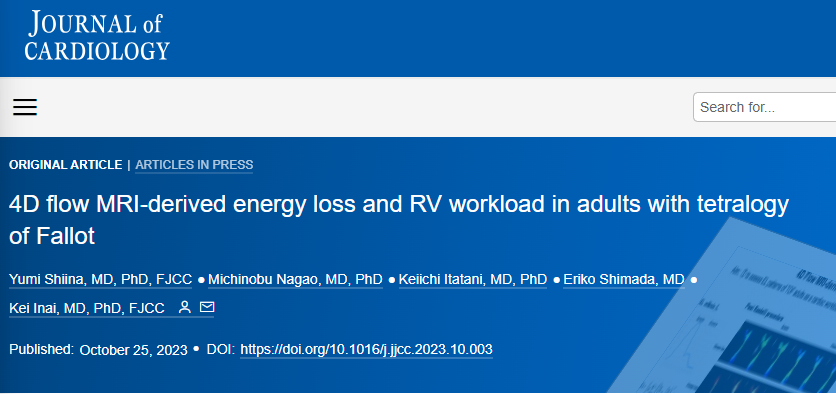4D flow MRI-derived energy loss and RV workload in adults with tetralogy of Fallot
This paper quantifies the Energy loss inside the pulmonary system in patients with repaired tetralogy of Fallot, particularly with the cases where stenosis and regurgitation were the main problems. Flow energy loss is put forth as a cardiac workload parameter and its relationship with symptoms and major adverse cardiovascular events (MACE). The selection of the control group for the study were 65 TOF (Tetralogy of Fallot) adults after repair who underwent 4D Flow MRI. All the enrolled patients had significant PR (Pulmonary Regurgitation) with regurgitant fraction of >25%. The 4D Flow post processing and EL (Energy Loss) calculations were performed using iTFlow® software by Cardio Flow Design Inc. EL is known to be influenced by the CO (Cardiac Output) and heart rate, which was examined by the EL/CO ratio as a parameter of energetic efficiency of blood flow.
EL = ∫▒〖μ ∑_(i,j)▒〖((∂u_j)/(∂x_i )+ (∂u_i)/(∂x_j ))^2 dv,〗〗
where μ indicates blood viscosity assumed to be 0.004 Pa sec; u and x indicate velocity and position inside the cardiovascular lumen, respectively; and i and j indicate the direction of the coordinate (AP, SI, and RL). The results were as follows:
1) a higher diastolic EL/CO ratio was the adjunctive important parameter for MACE in adult TOF
2) RVEF (Right Ventricular Ejection Fraction) was inversely related to average EL/CO and diastolic EL/CO in all TOF patients
3) in a sub-analysis of TOF with significant PS (Pulmonary Stenosis) and PR, diastolic EL/CO was also the most statistically important factor for MACE, not RV (Right Ventricle) volume
4) in a sub-analysis with PS and PR, RVEF was inversely related to average EL/CO, and diastolic EL/CO
5) in a sub-analysis with significant PR, both diastolic EL/CO and RV volume were important parameters for MACE.
In conclusion, High diastolic EL values were the most important factors for MACE in adult TOF. It is also related to lower RV EF and lesser function of the RV in adult TOF with PS and PR.

Reference
Yumi Shiina MD, PhD, Michinobu Nagao MD, PhD, Keiichi Itatani MD, PhD, Eriko Shimada MD, Kei Inai MD, PhD, "4D flow MRI-derived energy loss and RV workload in adults with tetralogy of Fallot", Journal of Cardiology, Published Online (2023) https://doi.org/10.1016/j.jjcc.2023.10.003.
Go To the Journal Page
